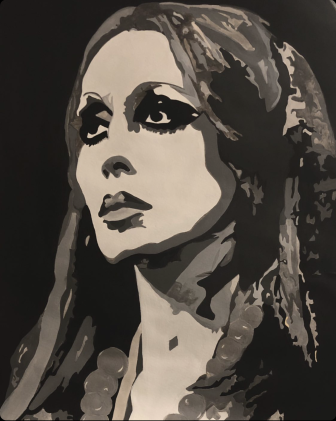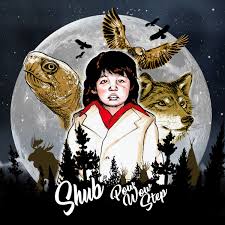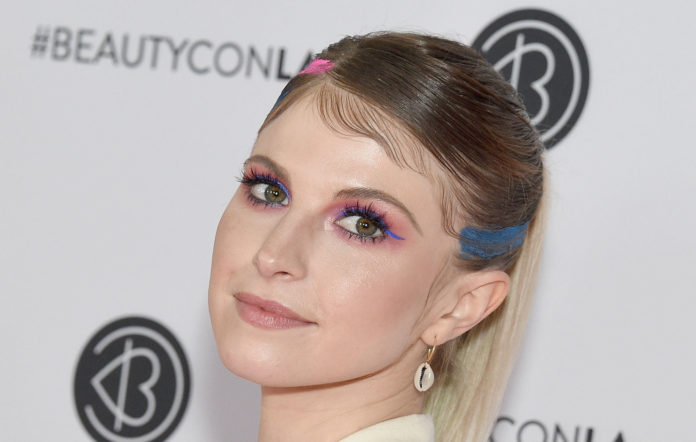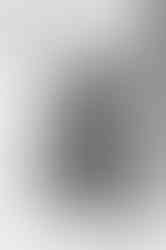An Interview with an Artist
- Sputnik
- Mar 17, 2020
- 9 min read
Would you like to introduce yourself and the work you do?
-I’m Nur Hussein. I am a writer, painter, and all things creative.
How long have you been writing and painting?
-I have been writing since I was in sixth grade, and I started painting sometime around high school, and became more competent with painting in college.
Was there a particular start for you in art?
-I was always a fan of art. For me, my liking of illustration started with graphic novels. I would read graphic novels at an early age, and then immediately after, imitate the drawings making them more personal.
I would take a Harley Quinn illustration, and draw her with a hijab just to include some piece of me in the stories I read. I had a teacher that introduced me to water colors, so I started using watercolor, but only with animated characters. It wasn’t until college that I started using mix media all together, and created illustrations true to me.
That’s awesome! Do you think your culture influences your art. Do you think that your art may also influence how you view your culture? Is there an exchange between the two?
-That’s a good question! - I do feel like my culture influences my art. My art (writing and painting) might not be strictly concerning my culture, but indeed, my culture has influenced my art, and the making of art. The reason why I started creating was because the lack of representation I, and people like me – people from my culture, had through the works I’ve read, the media I’ve watched. So, yeah, I think my culture influences my art and I think vice versa, that I influence art through culture. Does that make sense?
Yeah, I mean any art you put out creates a cultural impact and you create art as someone who is both Palestinian and Puerto Rican.
- Beautifully said. Speaking of which, with my paintings, I started a series where I paint portraits, and they are presented as a group, which essentially, is one piece, its own piece.
I will say my intention to why I created the series. My intentions with these portraits are not meant to directly present a person, but the complexity of that person...because we are more than just what we put out. It’s more than just “hey, I came from this place, therefore, I look like this...I feel like this, I act like this, etc.”
With my writing, I do write a lot of poems and prose pieces about Palestine, but it also consists mostly of pieces about my emotions and experiences as a person, or…I don’t know… I don’t think I’m helping out with these... *laughs*
It’s still influential. You look back at your work, and you have the lived experiences of a person in a relationship with Palestine. So, you’re influencing how people may view it. Maybe people have never seen a Palestinian artist, and then they see your work and say, "Oh, that’s fantastic."
-Exactly, that’s good!
That flows in with what you were saying about the complexity of people. Do you think when you make art you can divorce it from your background? Do you think anyone really makes art that’s not influenced by their culture?
- Depending… I think people can make art that isn’t influenced by culture, sure, but it’s almost inevitable to make something that comes from an impact of an experience. Whether it be culture, or an incident that happened when you were a kid, or whatever!
I do, however, think there is something crucial about including your culture in some way to what you’re creating or pursuing because of the lack of representation. I’ve taken so many art history classes, and most of what we learn were of people that are European - white painters, and often, those European painters are the ones to depict and interpret those of different backgrounds. This is where stereotypes got created.
It’s crucial to tell our stories, and not have someone else tell it for us. Still, I do see an issue, if you completely let your background define your work. Not from an artist’s stand point, but the audiences’. For instance, when people think of Native American artists, they think of something that is ancient. But, Native Americans are still here… they still exist, and they make contemporary (present day) art. This can be a problem. Consider artists as artists without already having an implication to what their art should look or be like.
Yeah I see that. Like DJ Shub who is a Native American music producer. So I feel like if someone describes his music as “Native American” music, which he does make because he is Native, someone might not think what he makes counts because it’s more contemporary.
-It divides it. It would divide the recognition. I would want to be recognized as an artist before putting a label to the type of work I create.
Do you think that you have a certain set of stages or steps you take when you approach creating something?
- Oh! So, I work on my pieces all together. I don’t focus on one painting, I put out 3 blank canvas’, and start painting them. Or I can be starting a drawing with one piece while painting the other - while glazing the other, and so on. My mind is funny like that. If I were to focus on just one thing I’ll get bored, and eventually lose interest.
But if I’m working on three painting at once, I feel like that creates story and narrative and connects my art in some way, and whatever I am not feeling, I move on to the next – which often fixes whatever I wasn’t feeling before. And it connects my overall message. I like to work things as a variety instead of just one thing.
That’s fascinating! I don’t think I’ve ever heard of anyone just being like “I’m going to do three things at the same time”
-Yeah, my painting professor used to make fun of me about that, in a good way. I just feel that it brings out different ideas for each and helps connects it. Does that make sense?
Yeah that makes sense to me. What do you seek out for inspiration? Is knowing what you want to paint easy for you?
-I NEVER know what I want to paint. I never know when I’ll start painting too. Even when I am painting, I don’t know what I am painting about! That’s because I never think about painting when I am painting. Even the very thought of, “What to paint?” doesn’t cross my mind until after I painted it.
I feel like my art overall, in writing and painting, is all about emotions or the human emotion, not necessarily about the human themselves. Even though it could appear that way while I’m doing a portrait, but then you see some exotic backgrounds or themes and it’s because I’m trying to present emotion or experience in some way.
Whatever my brain tells my hand to do, I just start doing. Same thing with writing! Most of my writing comes at 2 am while I’m half asleep, or just woken up, and I’m like, “Ah, this just came to my mind,” and I start jotting down notes. Art is whatever you mean to express.
So you never try to force something to happen, you just let it come naturally.
-Yeah!
Do you find you struggle with “The Blank Page” while writing?
-Oh, always. If I need something to be done, and I want to start from scratch, it almost never happens.
Yeah you can’t just be like WRITE!
-Yeah! It doesn’t work that way. If something comes to mind, "Oh, the grass is green today, let me write about it." It just comes through. For me, at least.
-This is tough because I view art as all different types of form and media, not just painting or writing. There are a lot of inspiring painters, for sure, but I’ve never been inspired completely by a painting. Music is very inspiring to my art. For instance, Haley Williams inspired me at such a young age.
Music taught me to express grief, anger, sadness, etc. I do it with painting or writing. And Shirin Neshat, she inspires me through the works of symbolism, and even rebelling.
Rebellion in a way that may be a bit more cloaked that you might realize.
-Yeah! I’m sure there is others, I know I’m going to go home and be like, “Ah, I should have said this person too.” But for now, I am sticking to those two.
See with Hayley Williams even, there is always that moment where I’d look up to her just as a white woman being able to express herself the way she does, and I always wondered if I could fit that agenda as a person of color.
In my culture, both Palestinian and Puerto Rican, mental illness is perceived as whitewashed. At least, speaking from my experience. I wouldn’t be able to talk about mental health to someone in my family, so I would express that through art. I learned to express those things through arts that focused on that idea.
Through art, you weren’t afraid to talk about it. I think that’s what good artists do for other people, opening doors. Where would you like to see some of your original pieces end up? Ideally, if there was a certain piece of yours that you love, who is the best owner for it in the future?
-Ooof. I’ve had a lot of people who have tried contacting me saying “I’ll buy this for this much money”, and sometimes it’s a lot, and sometimes it’s nothing, but I could never see my paintings anywhere else except in my arms! In my full control. And I know that’s so bad! It’s so hard. I had my series showcased not too long ago, and my paintings were the center piece which was incredible, and I loved seeing it up, but I guess, it’s hard to see how other people display your work instead of you. It’s different, and I can be bitter to it. For now, I can’t see it anywhere else except in my house – in my room.
Your art is basically at risk of another person interpreting and displaying it. You’re like, "I want them at home where I can keep them safe!"
-Yeah, exactly!
Do you create art for yourself or for others? Or is it somewhere in between?
-That’s a good question. I think it would be somewhere in between. Originally, I created it for myself, saying, “Hey, look there’s me!” That was the case for me when I started. However, that perspective shifted completely. I entered my series at the Mt. San Antonio College, Student Exhibit Show. I saw a group of people at a portrait telling their friends, or family, “hey, that looks like me.” At that moment, I knew, it is bigger than just me. I do not want any exclusion, and I want everyone to be able to find themselves in some way through my work.
You use the people in your art as the symbols?
-Yes, because that’s what catches people’s attention. People won’t care about a landscape drawing as much as they would care about a portrait. So, that’s my way of teasing it. Both in writing and painting, I have this sarcastic - double meaning behind my work. I never present things in a simple way or one way. Always look or create those interpretations.
It’s never quite what you would think it is just by looking at it.
-Yeah! I hope people are able to find themselves in my work in some way, in emotion, shape or color – expression in general, I want someone to relate to it.
It’s for you, then, it’s for people to find themselves in the art.
-Exactly. I have always felt excluded, and still do, often. In movies, TV shows, art, whatever it was, I could never find myself. Sure, they’re doing better with certain types of representation, but I still don’t see a hijabi Muslim woman taking a lead role in TV shows. I don’t even see her in a supporting role.
In general, if Muslims are represented in any way, it’s either as villains or victim, and frankly I see myself as neither, but a person. When I started creating, I knew that was what I wanted to do. I knew I wanted to at least find a way to represent myself, because the media I was given, failed me.
When I started painting, and writing too, I wanted something that I could be like “oh! See! THERE’S me, I’m right there!” During the exhibit, when I saw someone doing that with my work, I was like “OH! More people feel this way than me!”
Why don’t I represent people as a variety? Anybody! I don’t want any exclusion; I don’t want people to feel what I felt. That’s my overall goal with my art, just for people to find themselves.
It’s a beautiful sentiment, too. To realize something you went through and not be bitter and pull the door behind you closed. But to make sure you leave it open for everyone else. Do you have advice for others who are maybe thinking of starting art but don’t see how they fit in the art world for whatever reason?
- Thank you. I’ve always felt like I’ve never fit into the art world. But that’s silly. I don’t know why we create restrictions on these sorts of things. If you want to do something, I would say just do it! Don’t do it to get fame or popularity, do it because it’s what you feel is necessary – because it is.
Someone once told me that there is “too much art”, but I think there is not enough! We need as much creators and story tellers because we all have a different connection to the Earth. Art can connect us in significant ways. So, my advice is to keep creating, and if you haven’t yet, start creating!
(Interview edited for clarity)






















Comments